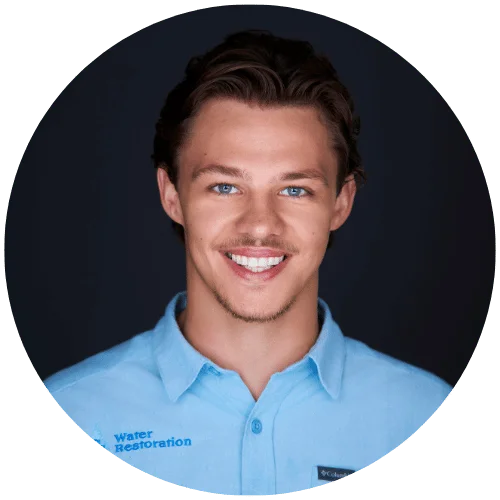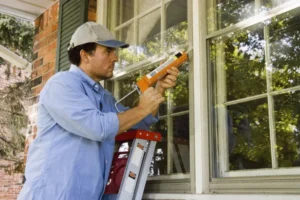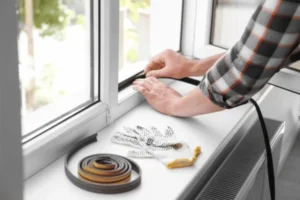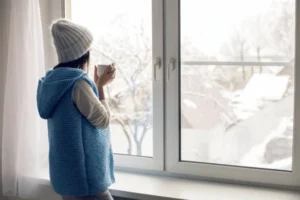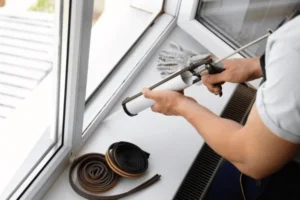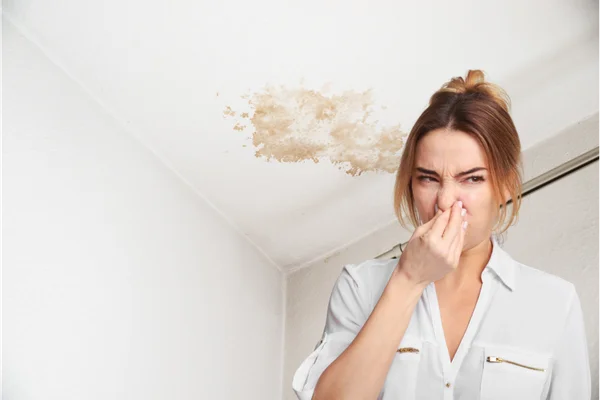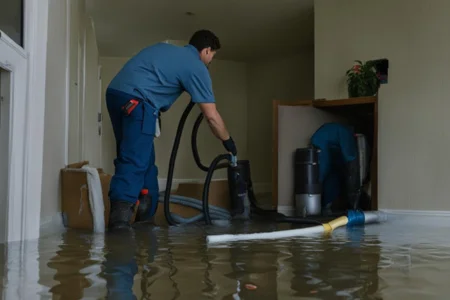As temperatures begin to drop, the comfort of your home and the efficiency of your heating system become increasingly important. Drafty windows, rising utility bills, and unwanted condensation are all signs that your home may need some seasonal attention. Winterizing windows is one of the most effective ways to prepare your home for the colder months, helping reduce heat loss, improve comfort, and prevent long-term damage.
Our goal is to help break down the key methods for winterizing, explain how they contribute to energy-efficient windows, and why addressing these issues is worth doing before the frost settles in. Let’s take a deeper dive into this topic.
Why Winterizing Your Windows is Essential
Preparing your house for winter is more than just a comfort issue—it’s an important part of protecting your home. By sealing drafts, improving insulation, and preventing moisture buildup, you not only reduce your heating bills but also safeguard your home against structural and mold damage.
Save on Heating Bills by Winterizing Your Windows
Heating your home in winter is one of the most significant energy expenses for most households. However, much of that warm air escapes through poorly sealed windows. Adding winter window insulation—such as weatherstripping or plastic film—helps trap warm air indoors and minimizes the strain on your heating system. This simple step can lead to substantial savings throughout the season.
Protect Your Home from Cold and Drafts
Drafty windows can create uncomfortable cold spots in your home. By winterizing windows, you make a barrier that blocks outside air and stabilizes indoor temperatures. This improves comfort in every room and reduces the need to overheat your home.
Preventing Frost and Condensation Damage
Frost and condensation may seem harmless, but they often indicate inadequate insulation. Left unaddressed, this moisture can cause mold, rot, and damage to the frames. Weatherproofing windows before winter helps prevent these issues and keeps your indoor environment dry and healthy, allowing you to continue enjoying the beauty of the season.
How to Winterize Windows Effectively
Winterizing doesn’t require a significant renovation. With the right materials and a few simple steps, you can significantly enhance your home’s winter readiness.
Insulating Windows with Weatherstripping
As temperatures drop, ensuring your windows are properly insulated becomes essential for maintaining a comfortable home. Weatherstripping is one of the most straightforward and cost-effective ways to improve the performance of your windows. Here’s how:
- Inspect for gaps around the frame where air and moisture can leak in.
- Clean and dry the surface thoroughly to reduce moisture-related issues.
- Apply adhesive-backed weatherstripping foam or rubber.
- Test the seal by closing the window to ensure no air leaks remain.
Proper weatherstripping can last for several seasons and offers immediate results.
Using Window Insulation Film for Extra Protection
For even better insulation, consider applying film. This plastic shrink film forms a tight, invisible layer over your windowpane, preventing heat from escaping.
- Measure the window and cut the film according to the size guidelines.
- Apply double-sided tape around the frame to secure everything.
- Secure the film and shrink it using a hairdryer for a smooth, tight fit.
This extra step provides excellent thermal insulation during harsh winters.
Caulking Gaps Around Windows to Block Air Leaks
Air can seep through cracks and joints around the frames. Caulking is a simple solution to block these air leaks:
- Remove old or damaged caulk so it is not in the way.
- Clean the area thoroughly to achieve the cleanest and smoothest surface possible.
- Apply fresh weather-resistant caulk around the perimeter of the window.
- Smooth the bead with a caulk tool or wet finger for a neat finish.
Even small gaps can contribute to significant heat loss if left untreated.
Benefits of Winterizing Your Windows Beyond Energy Savings
While lower energy bills are a major benefit, there are several additional advantages to winterizing windows.
Enhanced Comfort in Your Home During Cold Weather
Insulated and sealed windows eliminate drafts and cold zones in your home. The result is:
- More consistent temperatures across rooms
- Fewer hot-and-cold fluctuations
- A cozier space for relaxation and sleep
These benefits enhance your overall comfort during the cold months.
Protection from Moisture, Frost, and Ice Damage
Proper winterizing helps keep moisture out, reducing the risk of rot, mold, or structural damage. This protects both your windows and the integrity of nearby walls and insulation. Your home deserves that protection!
Improved Indoor Air Quality and Reduced Humidity
Ensuring your windows can lead to a healthier living environment and greater comfort:
- Fewer allergens circulating
- Reduced mold growth
- Enhanced comfort levels
- Improved overall well-being
Signs Your Windows Need Winterizing
Are you unsure if your house is ready for winter? Here are some common signs that indicate it’s time to take action:
Noticeable Drafts Around the Window Edges
If you feel cold air near your windows—even when they’re closed—that’s a clear sign of poor sealing. Drafts lead to energy waste and discomfort. Addressing these issues promptly will keep your home warm and cozy throughout the winter.
Condensation or Frost Buildup on Windows
If moisture forms inside your windows, it’s a signal that the seal between panes may be failing, or that indoor humidity is too high. Either way, it requires attention before problems arise.
Increased Heating Costs or Cold Rooms
If your energy bills are higher than usual or if certain rooms remain cold despite heating, your windows may be a contributing factor. Poor insulation can cause heat loss and inefficiency. Look out for these indicators:
- Drafts around window frames
- Difficulty keeping a consistent temperature
- Increased condensation on the windows
- Unexplained spikes in energy bills
Common Mistakes to Avoid When Winterizing Windows
Even when they mean well, some homeowners make mistakes that they could have avoided. Avoid the following errors to ensure your efforts are practical:
Not Sealing the Gaps Around the Window Frame
Failing to seal the gaps around your window frames can lead to significant heat loss during the winter months. To guarantee your home stays warm and energy-efficient, make sure to address these common mistakes:
- Ignoring visible cracks
- Overlooking the sill area
- Neglecting caulk maintenance
- Forgetting about weatherstripping
Using Improper Insulation Materials
While you may think any insulation material will suffice, using improper options can compromise your efforts to winterize your windows effectively. Materials like cardboard or plastic wrap might seem convenient, but they often don’t provide adequate insulation. Instead, opt for higher-quality options, such as foam or thermal curtains, that are specifically designed for winterizing.
Ignoring Window Damage Before Winter
Neglecting existing damage can undermine all your efforts to winterize effectively. Here are some common problems to check:
- Cracked or broken glass in the window
- Damaged or missing weatherstripping
- Rotting frames and boards around windows
- Gaps between the window and the frame
How Professional Window Winterization Services Can Help
While DIY methods can be effective, hiring professionals ensures the job is done thoroughly and efficiently. If your home has many windows or older units, professional winterization may be the most efficient solution.
Expert Advice on the Best Winterizing Solutions
As the cold months approach, professionals can recommend the most effective insulation solutions based on your window types, home layout, and climate zone. Their guidance ensures optimal comfort and energy savings.
Professional Window Insulation and Sealing Services
Experts utilize commercial-grade materials and advanced sealing techniques that surpass the performance of most DIY products. They also ensure a cleaner, longer-lasting result that improves your home’s efficiency throughout the season.
Save Time and Money with Professional Winterization
While DIY projects save money upfront, poorly sealed windows can lead to ongoing costs and discomfort. Hiring professionals means you won’t have to fix mistakes or redo work later. This will keep your home warm and cozy all winter, so you don’t have to worry about the cold.
Conclusion – Make Your Windows Winter-Ready
Winterizing windows is a simple yet effective way to protect your home, reduce heating costs, and enjoy a warmer, healthier indoor environment. Whether you choose to do it yourself or hire the experts, the key is to act before the cold and damp winter arrives. With sealed windows, improved insulation, and reduced moisture issues, you’ll be more than ready to take on the cold and keep your home safe and your family comfortable.
Protect your home from the cold while saving money! Contact us today for professional window winterization that lasts throughout the entire season.
Frequently Asked Questions
How often should I winterize my windows?
Can winterizing windows lower my energy bills?
What are the best materials to use for winterizing windows?
Is this something I can do myself, or should I hire a pro?
Will winterizing my windows also help reduce outside noise?
How do I know if my windows need winterizing?
What mistakes should I avoid when winterizing my home?

